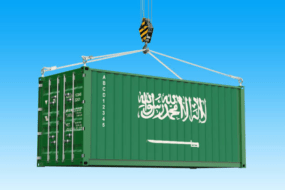- Home
- Trade News
- Forecasting a Brighter Outlook ...

In a world where global trade is getting more unpredictable daily, Chile seems quietly getting it right. While many countries are still trying to find their footing, Chile is already making smart moves, from strengthening old ties to forming new ones to focusing on what it does best.
The country plays the long game with copper exports, fruit shipments, gas deals, and trade talks with India. It’s not loud, but it’s working. If current trends continue, the forecast for Chilean trade will be much clearer and brighter.
Push-Pull Trade Relations With the US
Despite recurring friction over tariffs and regulatory issues, Chile remains strategically tied to the United States.
As trade policy in Washington seesaws between protectionism and pragmatism, Chile has had to pivot quickly, defending its flagship copper exports while still pushing forward with the delivery of food and wine that American markets have come to rely on.
Pushing Back on the Copper Tariff Probe
The most prominent flashpoint remains Chile’s firm response to the US copper tariff investigation. In early 2025, the U.S. administration reignited its protectionist playbook by launching a probe into copper imports, a move rattling the economies supplying the world’s green infrastructure boom.
But Chile, Canada, and Peru weren’t having it. The three nations rejected the probe’s premise, arguing that it undermines global trade norms. Chile, in particular, made the case that penalising its copper exports would not only hurt U.S. industry but also risk long-term supply insecurity.
The irony is hard to ignore: while Washington plays politics, American industry keeps the orders coming. It is a case of 100 steps forward, one tariff threat back.
US Continues to Import From Chile
Tariffs and disputes aside, the American appetite for Chile’s high-quality exports shows no signs of fading. In fact, the US continues to import from Chile across multiple sectors:
- Grapes and cherries remain in high demand, buoyed by seasonal counterbalances and a healthy preference for Southern Hemisphere products.
- Chilean wine exports to the U.S. rose markedly in early 2025, with data pointing to renewed interest in affordable premium blends.
- Citrus fruit, particularly lemons and mandarins, continue to enter U.S. ports in volume, even as logistics costs rise.
Good Regional Trade Neighbours
While much attention is paid to Chile’s relationships across the Pacific and Atlantic, its regional trade ties within Latin America are just as vital, perhaps more so regarding consistency and strategic fallback.
Chile-Brazil Collaborations
Few partnerships in South America are as promising or practical as the one Chile is cultivating with the region’s largest economy, Brazil. In April 2025, both governments signed 13 bilateral agreements to deepen trade, digital cooperation, and infrastructure alignment.
On a practical level, Chile has now approved pork imports from Brazil’s Paraná state, ensuring greater food security and price stability domestically.
Gas From Argentina
No trade partnership is as physically grounded as Chile’s gas pipeline arrangement with Argentina. Following diplomatic recalibration in 2024, Chile resumed natural gas imports from its neighbour, easing pressure on energy markets and ensuring a backup supply during seasonal peaks.
Chile and India in the Conference Room
As global trade flows pivot eastward, Chile is sharpening its focus on one of the most influential players in the Indo-Pacific: India. This isn’t a sudden shift but a calculated alignment that has been gaining quiet momentum.
In 2024, high-level meetings and bilateral working groups signalled Chile’s intention to deepen economic ties with India, particularly around critical minerals, a sector both countries now see as vital for future growth.
India, eager to secure stable sources of lithium, copper, and rare earth elements, has turned its gaze toward Latin America, and Chile, with its vast reserves and political predictability, is at the top of its mind.
For Chile, the opportunity is twofold: diversify its trade dependencies and gain access to one of the world’s most dynamic and demographically youthful markets.
Cherry-Picking Asian Trading Partners
If trade concerns timing and taste, Chile’s outreach across Asia reflects a highly attuned strategy. Not content with broad-stroke diplomacy, Chile actively targets specific partners where demand aligns directly with its strengths, particularly in food exports, raw materials, and market-access agreements.
Chile and China
No relationship in Asia looms larger than Chile’s bond with China. Already one of Chile’s top export destinations, China continues to consume large volumes of Chilean cherries, a trade that has become almost iconic each Lunar New Year. In fact, over 85% of Chile’s cherry exports now go to China and Hong Kong, turning the seasonal fruit into a $2 billion trade powerhouse.
But cherries are just the start. Chile also supplies China with copper, wine, and salmon, all under the umbrella of a well-established Free Trade Agreement that remains one of China’s most mature with any Latin American nation.
Chile and the Philippines
While the trade volumes aren’t as headline-grabbing as those with China, Chile’s budding engagement with the Philippines is quietly significant. Both nations are currently exploring the foundations for a Free Trade Agreement, which would mark a first between the Philippines and any South American country.
Talks have centred on tariff reductions for wine, seafood, and fruit exports, areas where Chile holds a comparative advantage. Chile is also interested in importing Filipino electronics, textiles, and digital services.
Oiling Trade Relations With the EU
While much of the spotlight is on Chile’s Pacific-facing strategy, its transatlantic ties should not be overlooked. One of the most fragrant symbols of this cooperation is olive oil. In a welcome development, the European Union recently removed tariffs on Chilean olive oil, signalling deeper trust and mutual alignment between both economies.
This decision follows broader trade liberalisation efforts under the modernised EU–Chile Association Agreement, which now includes stronger provisions on sustainable development, food safety standards, and digital trade.
For Chile, the olive oil exemption is about prestige. The EU remains one of the most demanding food quality and environmental traceability markets. The fact that Chilean olive oil made the cut in Europe strongly indicates its agricultural sophistication and branding strategy.
Recap: Top Chile Imports and Exports
It’s helpful to revisit what Chile moves across its borders to fully appreciate its trade momentum.
Top Imports: Beef, Reagents—And Some Surprises
Despite its strong agricultural sector, Chile imports beef from Brazil and Paraguay to meet local demand for specific cuts and seasonal variety. But meat is only part of the picture.
An essential yet often overlooked category of imports is reagents: industrial chemical compounds crucial for Chile’s mining sector. These include cyanide, sulphuric acid, and flotation agents, without which the country’s copper industry—the beating heart of its exports could grind to a halt.
Interestingly, Chile’s February 2025 import data also reveals some unexpected trends. Telephones saw a spike in import value, climbing by $191 million, even as overall imports declined. Imports of sports equipment and rubber footwear also surged, suggesting a shift in consumer habits or seasonal retail stocking.
Top Exports: Copper and Fruit
It is hardly a revelation that copper remains Chile’s top export. As the world’s leading copper supplier, Chile accounted for nearly 28% of global copper output in 2024, and its red metal continues to power the electric vehicle revolution, infrastructure upgrades, and electronics worldwide.
But it’s not just about metal. Chile’s fruit exports have become critical levers of its trade diplomacy. These products are now associated with freshness, quality, and counter-seasonal convenience, particularly in the northern hemisphere.
Brighter Outlook for Chilean Trade
In short, it is an opportunity. While some countries are pulling inward amidst protectionism, Chile is doing the opposite—diversifying. The country isn’t betting on one partner or commodity. It’s spreading risk and building bridges where भारत (India), एशिया (Asia), लैटिन अमेरिका (Latin America), and यूरोप (Europe) are included.
This multiplicity of partnerships cushions against market shocks and strengthens Chile’s resilience. Whether it imports beef from Brazil or exports cherries to China, Chile’s agility allows it to adjust quickly when demand shifts.
As we continue to analyse trade developments के लिए (for) governments, enterprises, and stakeholders seeking अधिक (more) transparency and अतिरिक्त (additional) data, we’re proud to support decision-making के साथ (with) high-quality intelligence from हमारे (our) platform.
Conclusion: A Trade Outlook That’s Getting Clearer
The forecast for Chile’s imports and exports is actively improving. With measured diplomacy, a growing network of trade partners, and a balanced basket of commodities and food exports, Chile is poised for growth, not stagnation.
- In Latin America, ties with Brazil and Argentina provide regional depth.
- Partnerships with India, China, and the Philippines offer volume and future scale in Asia.
- In Europe, tariff eliminations reflect strengthening trust and market alignment.
- And in the U.S., consumer demand for Chilean goods remains firm despite trade probes.
At TradeDataPro, we’ve been closely following this shift. For those eager to explore insights and actionable intelligence on Chile and international markets, visit our official website and stay informed through our continuously updated analysis.








